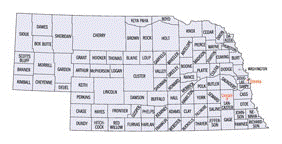Geography Program

Geography Program: Faculty Publications
Document Type
Article
Date of this Version
2016
Citation
Ecology and Society 21(3):21. http://dx.doi.org/10.5751/ES-08677-210321
Abstract
The resilience of a social-ecological system is measured by its ability to retain core functionality when subjected to perturbation. Resilience is contextually dependent on the state of system components, the complex interactions among these components, and the timing, location, and magnitude of perturbations. The stability landscape concept provides a useful framework for considering resilience within the specified context of a particular social-ecological system but has proven difficult to operationalize. This difficulty stems largely from the complex, multidimensional nature of the systems of interest and uncertainty in system response. Agent-based models are an effective methodology for understanding how cross-scale processes within and across social and ecological domains contribute to overall system resilience. We present the results of a stylized model of agricultural land use in a small watershed that is typical of the Midwestern United States. The spatially explicit model couples land use, biophysical models, and economic drivers with an agent-based model to explore the effects of perturbations and policy adaptations on system outcomes. By applying the coupled modeling approach within the resilience and stability landscape frameworks, we (1) estimate the sensitivity of the system to context- specific perturbations, (2) determine potential outcomes of those perturbations, (3) identify possible alternative states within state space, (4) evaluate the resilience of system states, and (5) characterize changes in system-scale resilience brought on by changes in individual land use decisions.


Comments
2016 by the author(s).